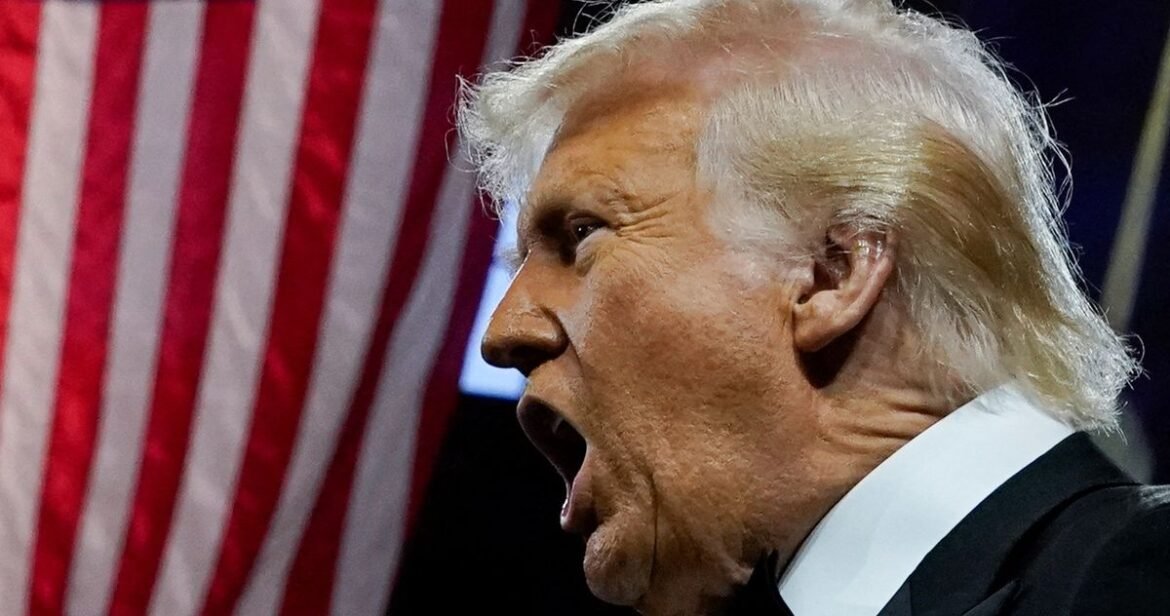
Photo: Nathan Howard/Reuters
One of Donald Trump’s most noteworthy characteristics as a president has been his robust deployment of the so-called madman theory in foreign policy. First developed during the Nixon administration, the idea is to convince potential adversaries that the man with his finger on the nuclear trigger has zero compunctions about pressing it — or about taking other dangerous steps that rational actors would never seriously consider. The possibility that the most powerful military in the history of the world may be in the hands of a homicidal maniac gave said maniac enormous leverage in situations involving international conflict. And the ever-constant threat of incredibly lethal violence fit in perfectly with Trump’s own personality and his Jacksonian approach to national defense, in which Uncle Sam would mostly mind his own business but was prepared to wreak holy hell on anyone who looked funny at him.
The madman theory is thus an important component of a message to a dangerous world that is basically “Fuck around and find out.”
But in Trump 2.0, it is increasingly apparent that the same psychology of erratic and often terrifying brinkmanship has been extended into nearly every policy arena, domestic as well as international, which isn’t surprising insofar as Trump’s universe of perceived “enemies” now tilts heavily toward people living in this country.
The blend of chaos, malice, and terror associated with pursuit of the madman theory in foreign policy has been abundantly present in the unprecedented assault on the federal government by Elon Musk’s DOGE and Russell Vought’s Office of Management and Budget. Both of these presidential operatives strongly believe the deep state is a nest of evil civilization-devouring elitists who must be crushed remorselessly. In his own companies, Musk has invariably exemplified the move-fast-and-break-things ethic of Silicon Valley, wherein running up video-game numbers of jobs lost and lives ruined is inherently virtuous. And Vought has been even more candid about his determination to demoralize public employees, as ProPublica reported last fall after viewing a speech in which the once and future director of the “nerve center of the federal government” explained his second-term plans:
[A major] priority, according to Vought, was to “defund” certain independent federal agencies and demonize career civil servants, which include scientists and subject matter experts. Project 2025’s plan to revive Schedule F, an attempt to make it easier to fire a large swath of government workers who currently have civil service protections, aligns with Vought’s vision.
“We want the bureaucrats to be traumatically affected,” he said. “When they wake up in the morning, we want them to not want to go to work because they are increasingly viewed as the villains. We want their funding to be shut down so that the EPA can’t do all of the rules against our energy industry because they have no bandwidth financially to do so.
“We want to put them in trauma.”
So the confusion and sheer panic associated with DOGE orders and OMB-directed funding and personnel moves have been very deliberate. If the chaotic manner in which these incoherent plans were carried out made it hard for federal employees to get work done, that was all the better, since this administration does not value such work. From within the bureaucracy, it very much felt as if the federal government were in the hands of madmen, who treated them like they were North Koreans.
But the most remarkable deployment of the madman theory of this administration so far has probably been the ongoing saga of trade policy, with vast implications for both international and domestic affairs. Before and certainly after “Liberation Day” — when Trump announced a regime of near-universal tariffs, chaos, and constant changes of direction — ever-escalating expressions of belligerence have characterized trade policy to an extent never seen before.
Books will undoubtedly be written about the backstory of Liberation Day, and we may eventually find out the extent to which the wild disorder of Trump’s announcements reflected a behind-the-scenes power struggle between protectionist ideologues and more conventional conservatives horrified by the likely fallout of a trade war. At various points, it has appeared that Trump himself was being whipsawed by the disastrous impact on financial markets of his threats to build a sort of Fortress America with strategies straight out of the 19th century.
But in the wake of Trump’s latest wild move — a sudden 90-day pause on the tariffs he just imposed last week combined with new high tariffs for China — it’s notable that his flacks are once again deploying the madman theory to suggest the Boss is shrewdly manipulating us all in order to further a deeply shrewd policy agenda. As relieved investors reacted positively to the news that Trump had done yet another 180-degree turn, administration spokesmen and allies claimed it was all part of the plan:
Trump, of course, has actually not accomplished a thing yet in terms of securing major concessions from trading partners. His pause on Liberation Day tariff rates amounted to the partial refilling of a hole he very deliberately dug. But leave it to his fans to believe that he’s playing ten-dimensional chess while his critics and adversaries are playing checkers. The more chaos Trump generates, the greater the genius it proves, since no normal mind could possibly come up with such an erratic course of action, right?
This rationalization of the 47th president’s worst impulses is especially dangerous since it reinforces his own belief that he is never wrong. If he is encouraged to behave more erratically than ever, he will continue to reward destructive nihilism in his subordinates, and we’ll all go a bit mad just trying to keep up.

